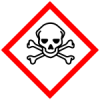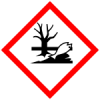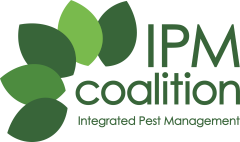The Producer has a plan to phase out by 2024 pesticides listed in category 2 of the Globally Harmonized System of Classification and Labelling of…
Coalition status
BCI Phase out by 2024FSC highly restricted HHPs
Bonsucro Banned
Chemicals that are banned by the Bonsucro…
Chemical pesticide presenting two or three out of the following hazards: acute toxicity, chronic toxicity and environmental toxicity.
GCP ProhibitedPesticides in the Prohibited List are not used.
This includes pesticides that are:
Listed under the Stockholm Convention, Rotterdam Convention or…
Rainforest prohibited PesticidesRSB BanNone of the chemicals recorded in the WHO’s 1a and 1b lists shall be used. The use of chemicals recorded in Annex III of the Rotterdam Convention, in…
SAN HHP: phase-outThe SAN List of Highly Hazardous Pesticides consists of 230 pesticides:
SAN HHP Pesticides are classified as Highly Hazardous Pesticides according to…
UEBT ProhibitedThe use of Prohibited Agrochemicals is prohibited for certified, prioritised and verified ingredients, because they are considered Highly Hazardous…
UTZ ProhibitedA pesticide all uses of which have been prohibited by final regulatory action, in order to protect human health or the environment.
Details
Type: Pesticide
Use: Insecticide
Example applications: Field corn;Sweetcorn;Popcorn;Silage corn;Citrus;Public health situations
Example pests controlled: Corn rootworm;Cutworms;Wireworms;Maggots;Seedcorn beetles;White grubs;Thrips;Cockroaches;Mosquitoes;Silverfish;Corn borer
Mode of action: Non-systemic with contact and stomach action and rapid knock-down effect. Sodium channel modulator.
Source: PPDB
Toxicty
Fatal if inhaled (H330)
Fatal if inhaled
Highly hazardous (Class WHO Ib)
WHO class I – b: highly hazardous
Mammal toxicity
Acute oral LD50 for most sensitive mammal species (LD50 < 200mg/kg bw).
Identifiers
Cas-RN: 68359-37-5
Beilstein: 2788149
Chebi: 39314
CiPac: 385
EC: 269-855-7
PubChem: 104926
US EPA: 128831
GHS safety labels
About Globally Harmonized System of Classification and Labelling of Chemicals (GHS)
From Wikipedia: The Globally Harmonized System of Classification and Labelling of Chemicals (GHS) is an internationally agreed-upon standard managed by the United Nations that was set up to replace the assortment of hazardous material classification and labelling schemes previously used around the world. Core elements of the GHS include standardized hazard testing criteria, universal warning pictograms, and harmonized safety data sheets which provide users of dangerous goods with a host of information. The system acts as a complement to the UN Numbered system of regulated hazardous material transport. Implementation is managed through the UN Secretariat. Although adoption has taken time, as of 2017, the system has been enacted to significant extents in most major countries of the world.[1] This includes the European Union, which has implemented the United Nations' GHS into EU law as the CLP Regulation, and United States Occupational Safety and Health Administration standards.
- H300

Fatal if swallowed
Class: Acute Toxicity
Subclass: Oral - H300

Fatal if swallowed
Class: Acute Toxicity
Subclass: Oral - H330

Fatal if inhaled
Class: Acute Toxicity
Subclass: Inhalation - H331

Toxic if inhaled
Class: Acute Toxicity
Subclass: Inhalation - H400

Very toxic to aquatic life
Class: Aquatic
Subclass: Acute - H400

Very toxic to aquatic life
Class: Aquatic
Subclass: Acute - H410

Very toxic to aquatic life with long lasting effects
Class: Aquatic
Subclass: Chronic - H410

Very toxic to aquatic life with long lasting effects
Class: Aquatic
Subclass: Chronic
